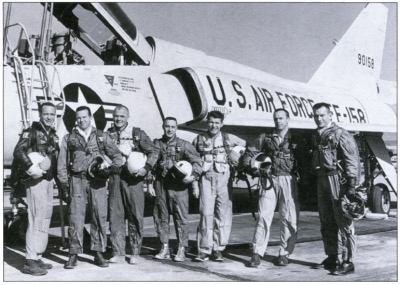How can an organization learn to fail faster when failure is not considered an option?
The idea that bureaucracy inhibits innovation is far from new: Political scientists in the early 1960s were already making the charge that, “There is a growing feeling that modern organizations and particularly the large, bureaucratic business and government organizations, need to increase their capacity to innovate” (Victor Thompson, Administrative Science Quarterly, June 1965).
Fifty years later, this ‘feeling’ continues to grow, often in bureaucracies that have also grown in the interim. The US Air Force is one such institution. Yet, there are creative ways to advance, as an opportunity for Prescient to spend a day with the Air Force Chief of Staff and a group of peers from industry and the government made clear. A diverse group were gathered–technology entrepreneurs, corporate CEOs, government executives, futurists and Air Force officials.
Although we talked extensively about practical fixes that could begin to create new pockets of innovation across the Air Force, we all agreed that ultimately the United States government as a whole will need a new way of thinking about innovation and failure.
Innovation challenges are formidable
Like other large government bureaucracies, the Air Force has:
- A globally distributed workforce–in this case it is over 300,000
- Mission critical areas in which failure is not perceived as an option
- Lack of full control over its own destiny: Congress and the White House have a strong say in how the Air Force allocates its resources and defines performance incentives
- A deeply embedded structure for performance and advancement
- A budget that is static and set by others
The lack of control over much of their own destiny, coupled with a stringently defined mission, makes it difficult to incentivize innovation.
As the Air Force officials explained to us, the Service can best reward new problem solving approaches only at the tactical level over which it has authority. Strategic innovation is more complicated. Yet, doing nothing is not an option. Agency leaders have palpable concern that without establishing the conditions for innovation, the United States will fall behind, with consequences that have not yet been contemplated by national leaders.
In Silicon Valley, it is widely accepted that taking risks that might fail is a necessary prerequisite for innovation.
Yet unlike a private corporation, the Air Force must explain itself to Congress, which does not look kindly on failure. Of course, many large legacy corporations share this suspicion of failure. The obvious consequence is that productive failure is not incentivized, but nor is the kind of behavior that could lead to innovation
What to do?
How to introduce a culture of innovation in impossible situations
The advisory group came up with a variety of suggestions for the Air Force:
- Public private collaborations are essential to accelerate innovation. Opportunities to work on a project with colleagues from other institutions could be a reward for innovation as well
- Develop an expectation that a certain amount of failure is not only tolerable, but productive, but bound the expectation to limit fear Identifying a threshold of expected failure (20%, for example) can be a useful metric to show that innovative ideas are being developed and tried. This kind of mindset can be introduced to those who hold the purse strings, such as Congress
- Create rewards and incentives that are not financial when the budget is fixed. Millennials (and non-millennials!) may appreciate a shorter workweek or the opportunity to work on projects of their choosing more than money
- Ensure better teamwork by “translating” different fields to one another. In order to accelerate productive collaborative work, interdisciplinary team members need to understand the values, norms and vocabularies of their colleagues. This kind of understanding can be encouraged organically by embedding team members with their counterparts, so they can absorb how others talk and work. It can also be productive to surface this need and hold workshops or other guided discussions in which teammates explicitly translate their work to others.
- Develop teams in which diversity of thought is encouraged and nurturedIn many cases, external signs of diversity (race, ethnicity, gender) are markers of diversity of thought because different people experience the world differently, but sometimes there are no external markers. Seek people who think and create differently from one another, and encourage the conditions in which those differences are valued.
These are practical steps by which a large bureaucracy can begin to establish a collective narrative of innovation that resonates throughout the organization.


